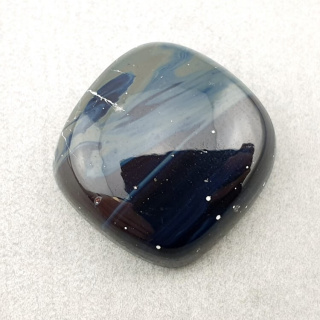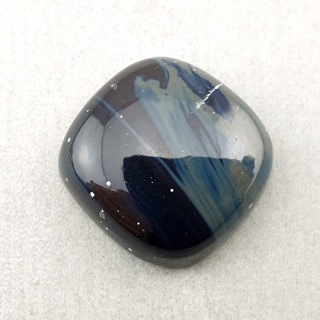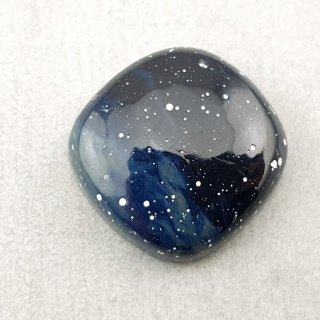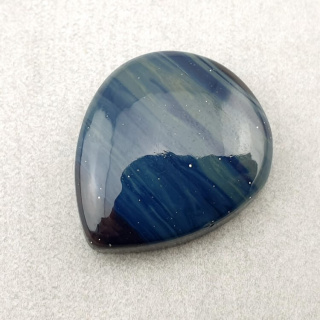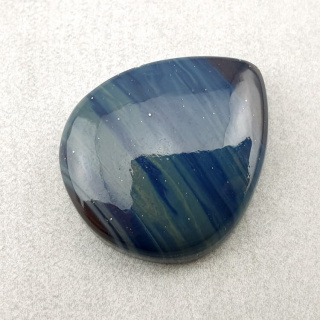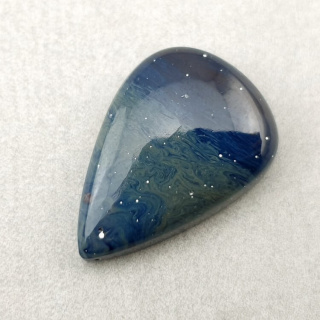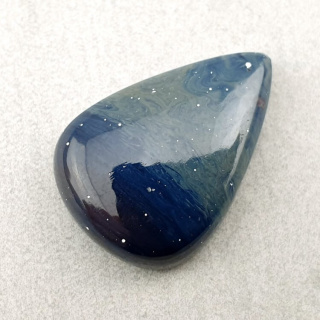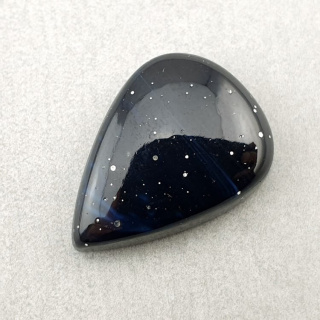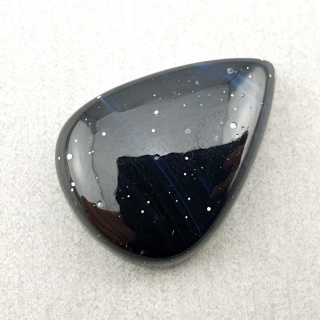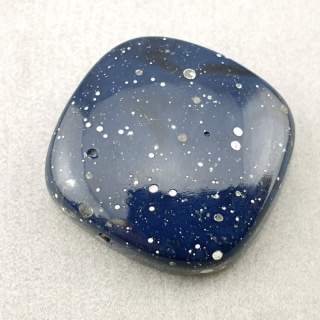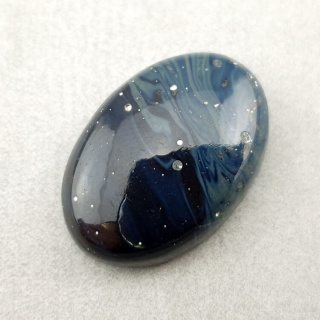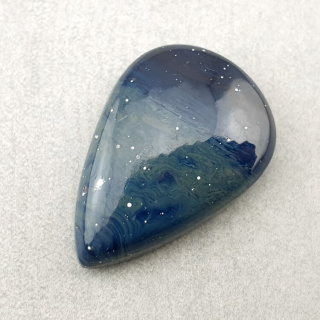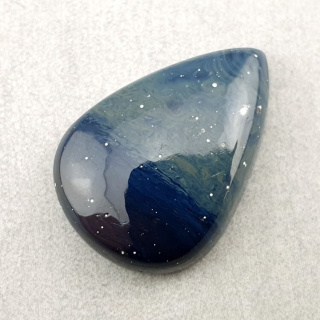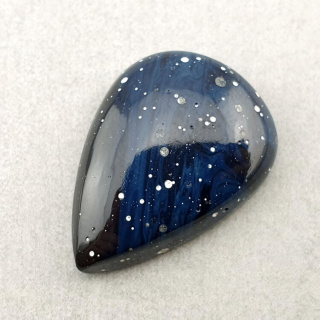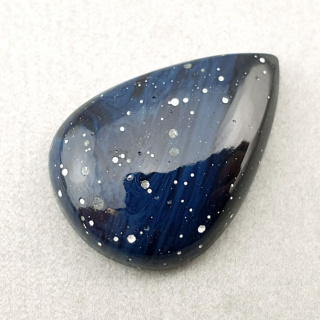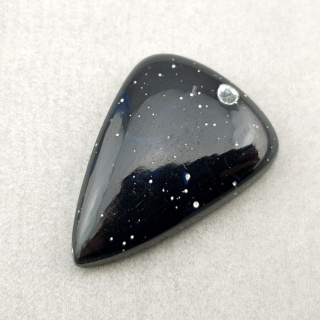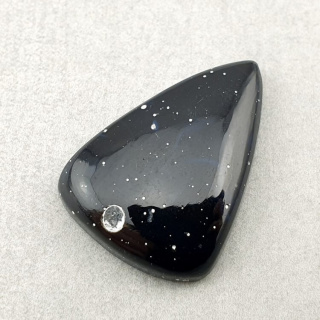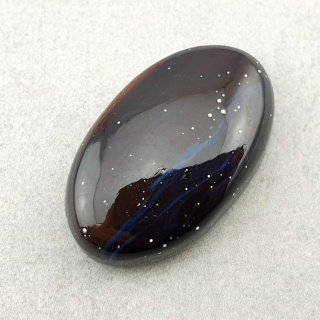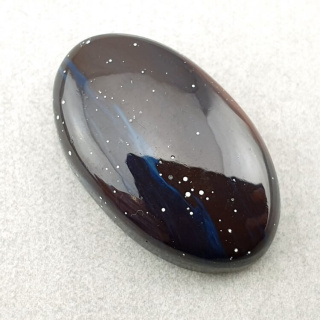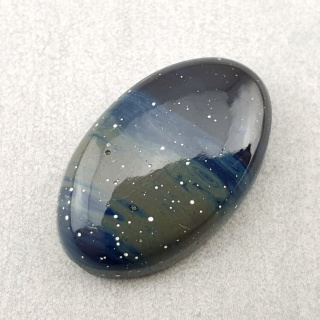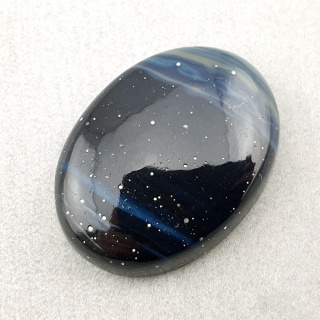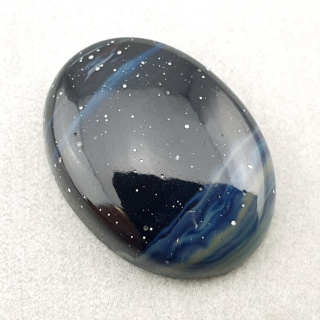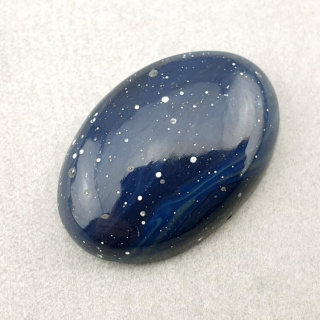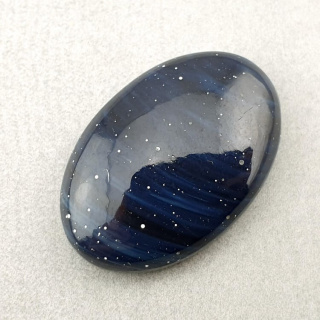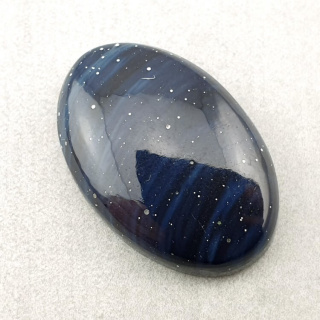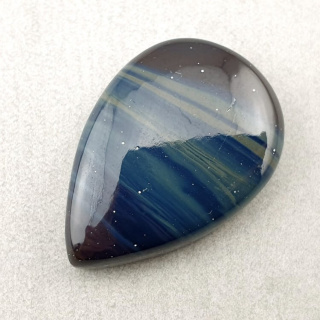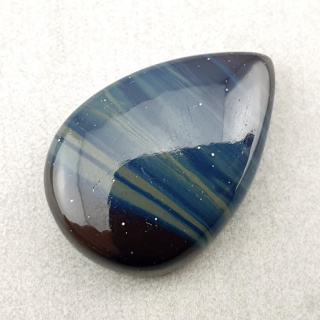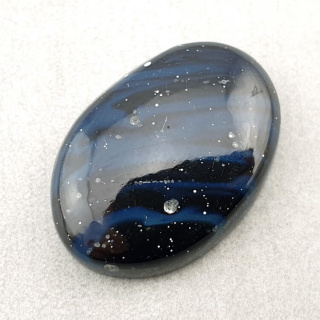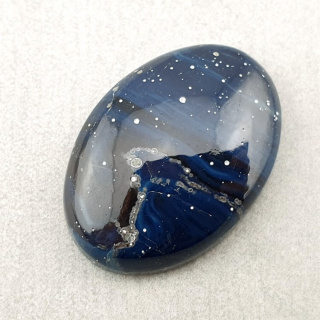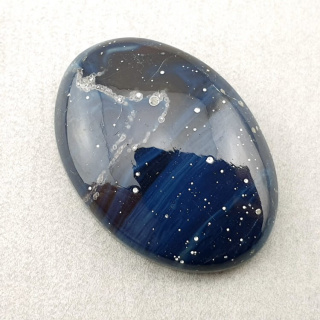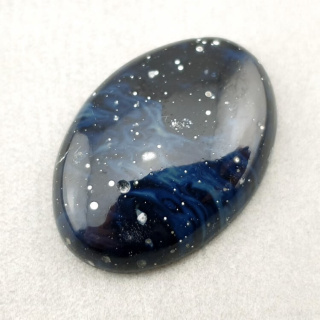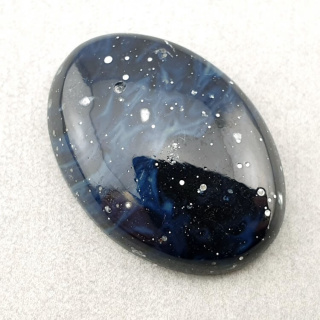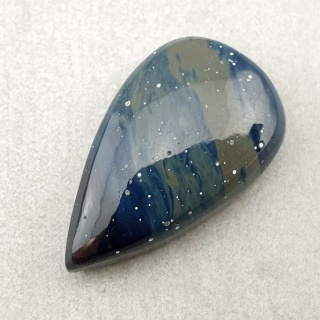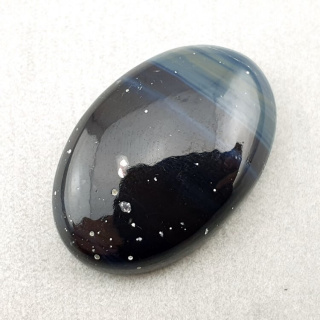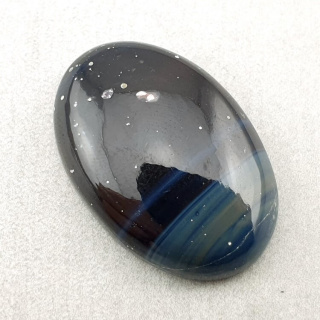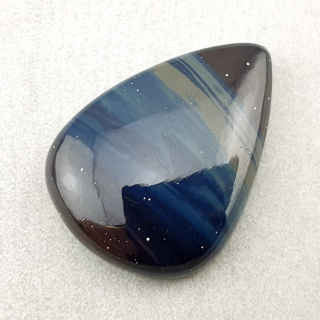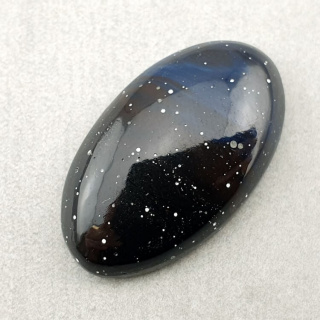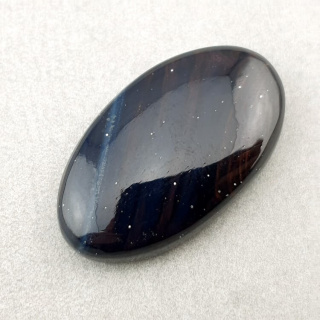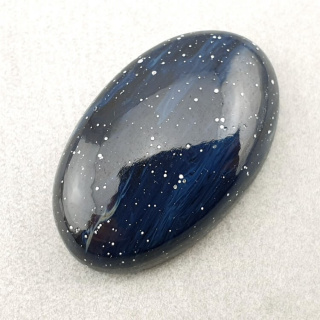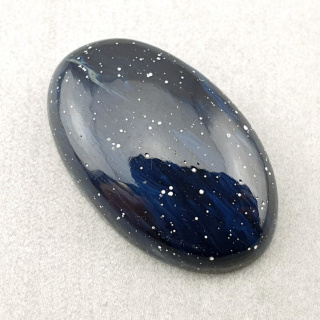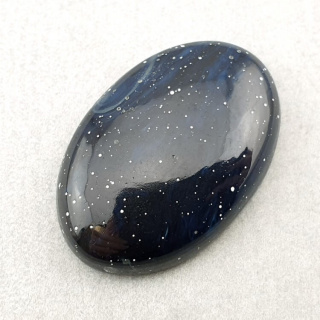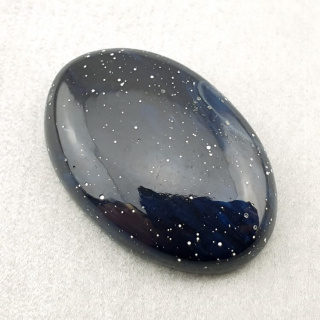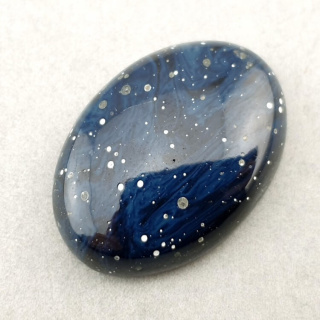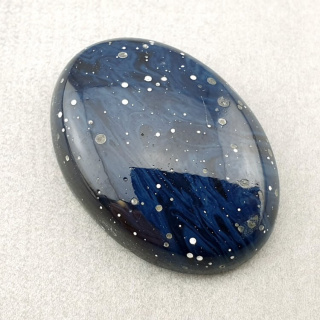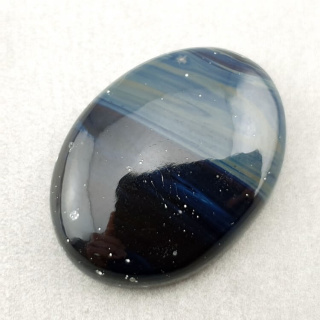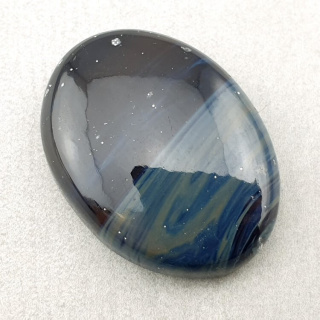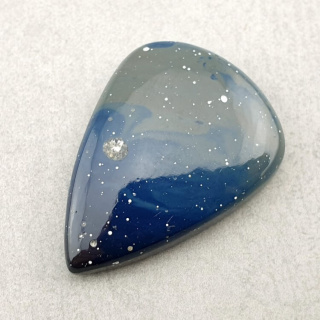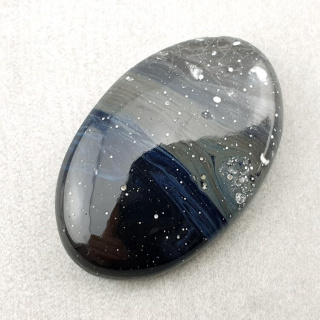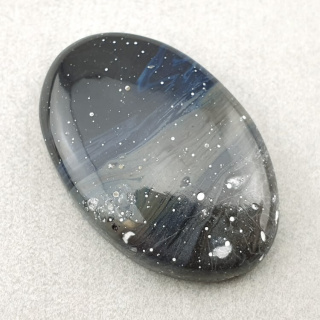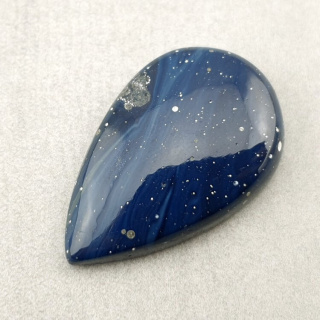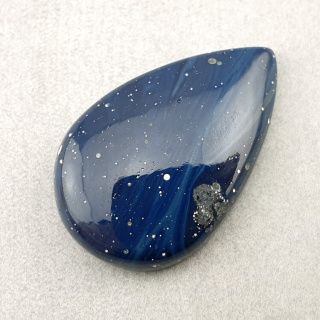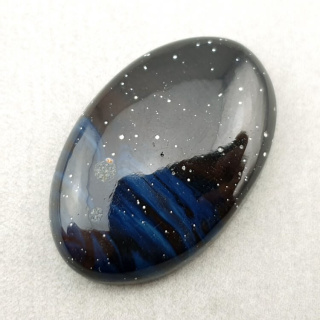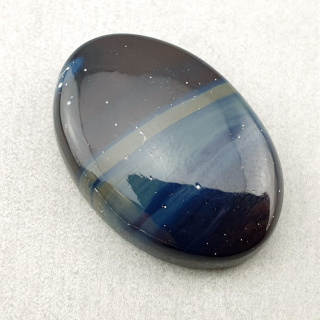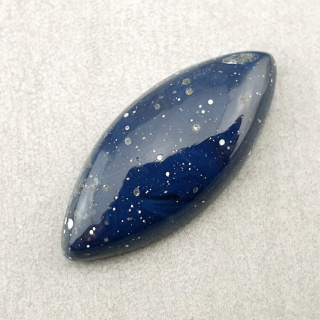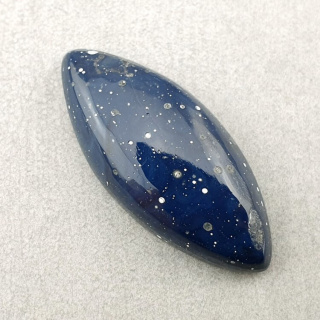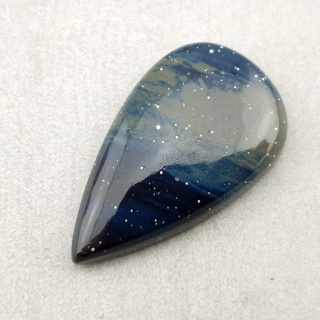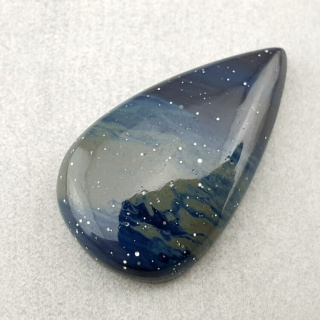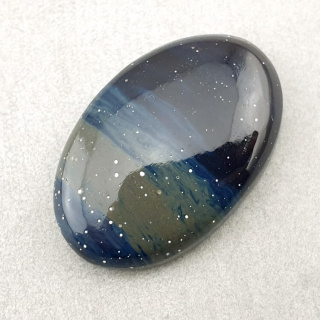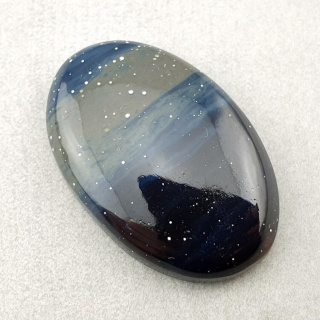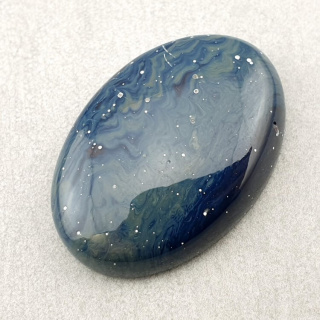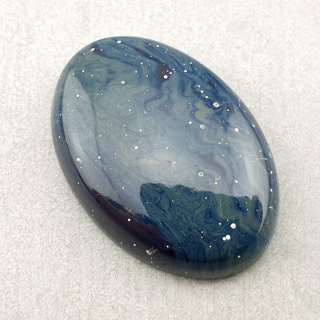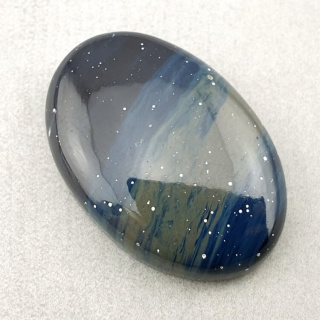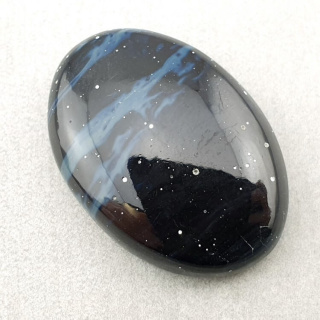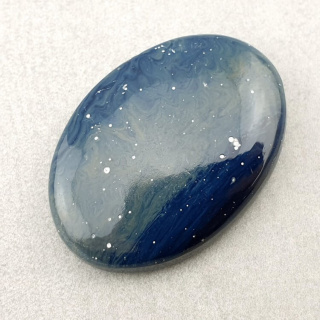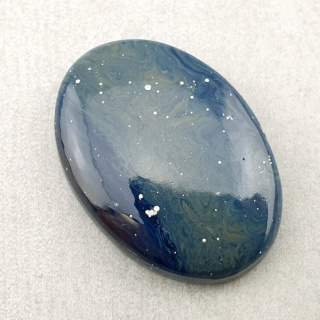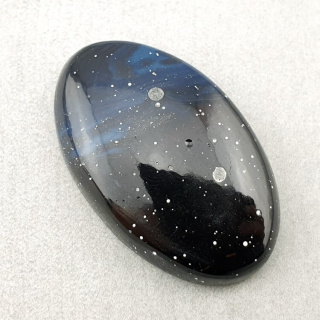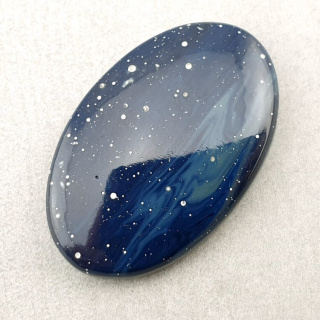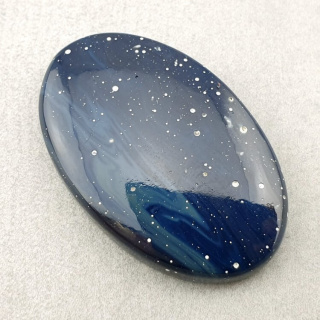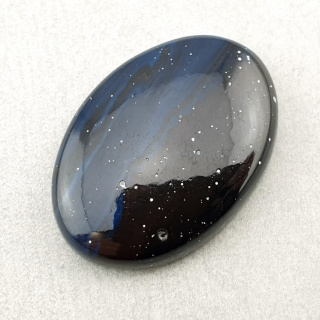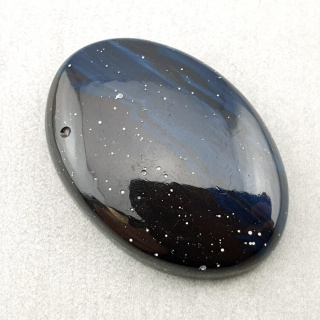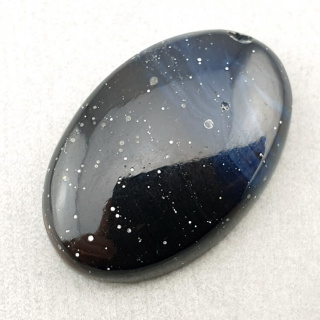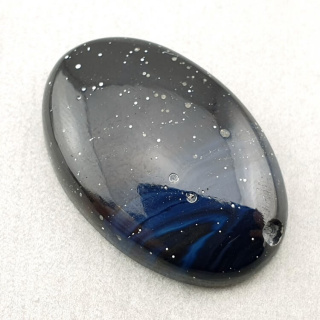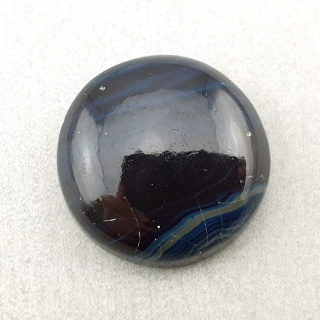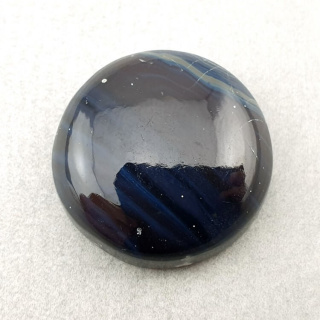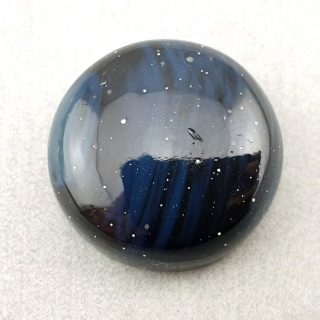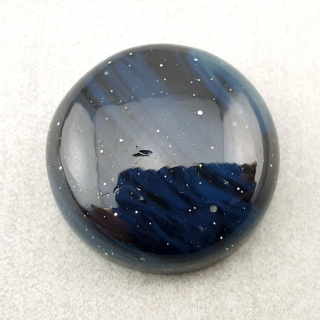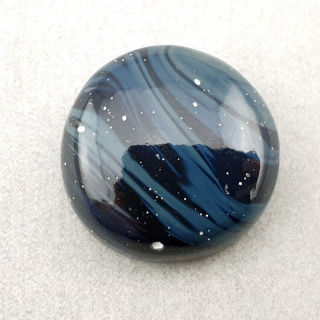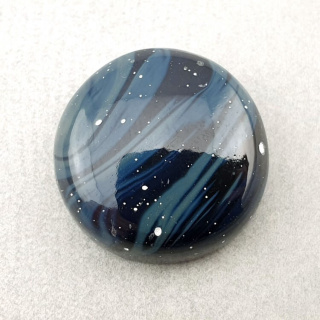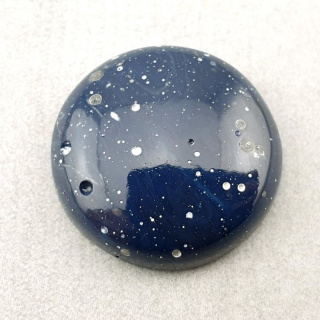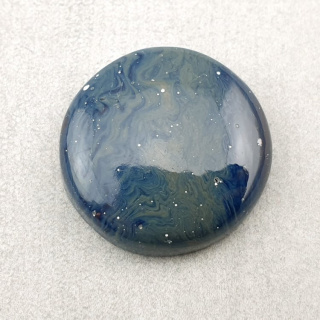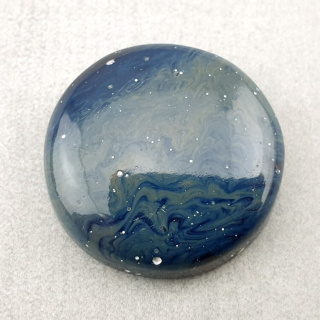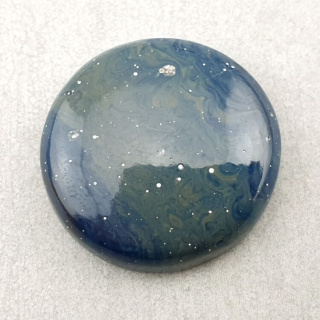Leland Blue is a natural glass originating from Michigan, USA
Number of products : 50Leland Blue, also known as Leland Blue Slag Glass or Leland Blue Stone, is a unique glass that was created as a by-product of the ironworks industry in the city of Leland, Michigan, over a hundred years ago. This glass was created during the iron ore refining process. The ironworks in Leland, operated by the Lake Superior Iron Company, used a method of heating iron ore with lime. This process helped remove impurities from the ore, producing refined iron. However, this process generated waste in the form of slag, which was a by-product of separating impurities and other materials from the molten iron. The slag, containing various minerals and elements, was usually dumped into Lake Michigan. Over time, the slag deteriorated and eroded, leading to the formation of smooth, colorful pieces of glass. These pieces of glass, often in shades of blue, were later discovered and recognized as uniquely beautiful minerals.
The iron ore refining process: how Leland Blue was created
The iron ore refining process using lime contributed to the creation of Leland Blue. Here's how it happened:
- Iron metallurgy: In the steel production process, iron ore (usually composed mainly of iron oxides) must undergo a refining process to remove impurities and obtain pure metal.
- Adding lime: Lime is used as a “flux” or auxiliary substance to refine iron ore. Lime is added to the molten iron ore. During this process, the lime reacts with impurities such as silica (SiO2) and other minerals to form slag.
- Slag formation: The reaction between the lime and the impurities leads to the formation of slag. Slag is a fusible substance that floats on the surface of molten iron, separating from it. Slag contains various minerals, elements, and parts of components added to iron ore and flux.
- Slag removal: After separating from the molten iron, slag is discharged into external containers or the environment, where it undergoes further processing or is disposed of as waste.
- Natural processing: In the case of Leland Blue Slag Glass, the slag discharged into Lake Michigan underwent a natural process of destruction and erosion. This resulted in smooth, colorful pieces of glass, which were and are still collected as valuable raw materials for the production of jewelry and other works of art.
In general, it is the process of refining iron ore using lime that generates slag, which later becomes the raw material for Leland Blue Stone.
What is the significance of Leland Blue Slag Glass for the city of Leland?
Leland Blue Slag Glass is of significant historical importance to the city of Leland, Michigan, and to the broader glass industry. Here are a few aspects that explain this significance:
- Steel industry heritage: Leland Blue Slag Glass is a reminder of Leland's industrial history. The steel-making process that led to the creation of this unique material was an important part of the region's economy and contributed to the growth of the city and surrounding communities.
- Economic significance: The iron and steel industry, including iron ore refining, had a significant impact on the local economy, providing jobs and generating income for residents and businesses in the region. Leland Blue is a testament to these economic changes.
- Cultural heritage: Leland Blue Slag Glass is an important part of the cultural heritage of the city of Leland and its surroundings. It is a symbol of the past and industrial tradition that has shaped the lives of local communities for many years.
- Tourism and attractions: For the city of Leland and the surrounding area, Leland Blue Slag Glass has also become a tourist attraction and point of interest for visitors. People coming to the region enjoy searching for these unique pieces of glass, which contributes to the development of local tourism.
- Continuing the craft tradition: The heritage of the glass industry that gave rise to this glass continues to inspire local artisans and artists to create works of art using this unique material. As a result, the craft tradition is passed on to future generations, maintaining a connection to the past.
Overall, Leland Blue plays an important role in the history, culture, and heritage of the city of Leland, Michigan, and is an important part of the region's industrial heritage.
Why is Leland Blue highly prized by collectors and artists?
Leland Blue is highly prized by collectors and artists for several distinctive characteristics:
- Unique origin: Its history as a by-product of the ironworks industry in Leland, Michigan, gives it a unique historical background that appeals to collectors interested in industrial history and vintage materials.
- Distinctive color: Its unique blue color, ranging from light azurite to deeper shades of cobalt, sets it apart from other types of glass. This uniqueness adds to its aesthetic appeal and makes it desirable for use in jewelry and decorative art.
- Variable structure: Each piece of Leland Blue is unique, varying in color, texture, and shape. This variable structure adds to its charm and makes each piece a unique treasure for collectors and artists looking for exceptional materials.
- Natural processing: The process of natural weathering and erosion gives Leland Blue Stone a smooth, polished surface and interesting patterns, enhancing its visual appeal and quality.
- Versatility: Leland Blue can be shaped, cut, and polished into many forms, from cameos and beads for jewelry to larger pieces for sculpture and decorative art.
- Cultural and regional significance: For residents of Leland, Michigan, and enthusiasts of local history, Leland Blue Slag Glass has cultural significance as a reminder of the town's industrial past and its connection to the Great Lakes region.
Overall, the combination of historical significance, distinctive color, unique variability, and versatile utility makes Leland Blue Slag Glass highly prized by collectors and artists.
What color variations can be found in Leland glass?
Leland Glass can come in a variety of colors, although blue is the most characteristic. Here are some common color variations and factors that influence their formation:
- Blue: This is the most common color. Shades can vary from a delicate pastel blue to deeper, more intense shades of cobalt. The blue color is mainly caused by the presence of iron in the chemical composition of the slag.
- Gray: In some cases, Leland Stone may have a gray tint. This is often the result of various other impurities and minerals present in the slag, which can affect the color of the final product.
- Green: Although rarer than blue, a green hue can also occur in Leland Slag Glass. This is usually caused by the presence of copper or other minerals containing this color.
- White/clear: Sometimes, pieces of Leland Slag Glass with a more transparent or white color can also be found. These pieces may be less saturated with impurities and minerals, making them more transparent.
Is the composition of Leland Blue Slag Glass different from traditional glass materials?
The composition of Leland Blue Slag Glass differs from traditional glass materials mainly due to its unusual origin and chemical composition. Here are some key differences:
- Origin: Leland Blue Slag Glass is a by-product of the iron ore refining process, during which slag containing various minerals and elements is dumped into Lake Michigan. Unlike traditional glass materials, which are intentionally manufactured by humans, Leland Blue Stone is formed naturally as a result of industrial processes.
- Chemical composition: The chemical composition of Leland Blue may differ from traditional glass depending on its source and manufacturing process. Due to its origin as a metallurgical product, it may contain additional minerals and elements that are not found in traditional glass.
- Color: The characteristic blue color of Leland Blue is the result of the presence of iron in its chemical composition. This unique color distinguishes it from traditional glass materials and gives it a unique aesthetic appeal.
- Texture and patterns: The natural processing and erosion process gives Leland Blue a unique texture and patterns that may differ from traditional glass materials. Its smoothness and polished surface, often with natural patterns, give it a distinctive appearance.
- Variation: Each piece of Leland Blue Slag Glass is unique, with variations in color, texture, and shape. This variation makes it a unique material for collectors and artists looking for one-of-a-kind works of art.
What are the uses of Leland Blue in handicrafts?
Leland Blue Slag Glass is widely used in handicrafts. Here are some of the most common uses:
- Jewelry: One of the most popular uses of Leland Blue Slag Glass is in jewelry making. Pieces of this glass are often used to create rings, necklaces, earrings, and bracelets. Their distinctive blue color and unique texture give the jewelry a unique look.
- Home decorations: Leland Blue Stone can also be used to make a variety of home decorations, such as vases, lamps, sconces, and wall decorations. Pieces of glass can be formed into various shapes and sizes, allowing for the creation of a variety of works of art that add character and individuality to any interior.
- Sculptures and paintings: Some artists use Leland Blue Slag Glass to create sculptures and paintings. Pieces of glass can be combined with other materials, such as wood or metal, to create unique works of art in a variety of forms and themes.
- Garden accessories: Leland Blue Slag Glass can also be used to create garden decorations such as fountains, garden balls, and architectural elements. Its weather resistance makes it suitable for both indoor and outdoor use.
- Gifts and souvenirs: Due to their unique origin and aesthetics, items made of Leland Blue Slag Glass are often chosen as gifts or souvenirs. These can be individual pieces of jewelry, home decorations, or other handcrafted items that have sentimental and aesthetic value.
Overall, Leland Blue Slag Glass is a versatile material that finds application in many areas of craft and art, inspiring both professional artists and hobbyists to create unique works.
![[{[item.product.name]}]]([{[item.product.photo.url]}] 75w)

